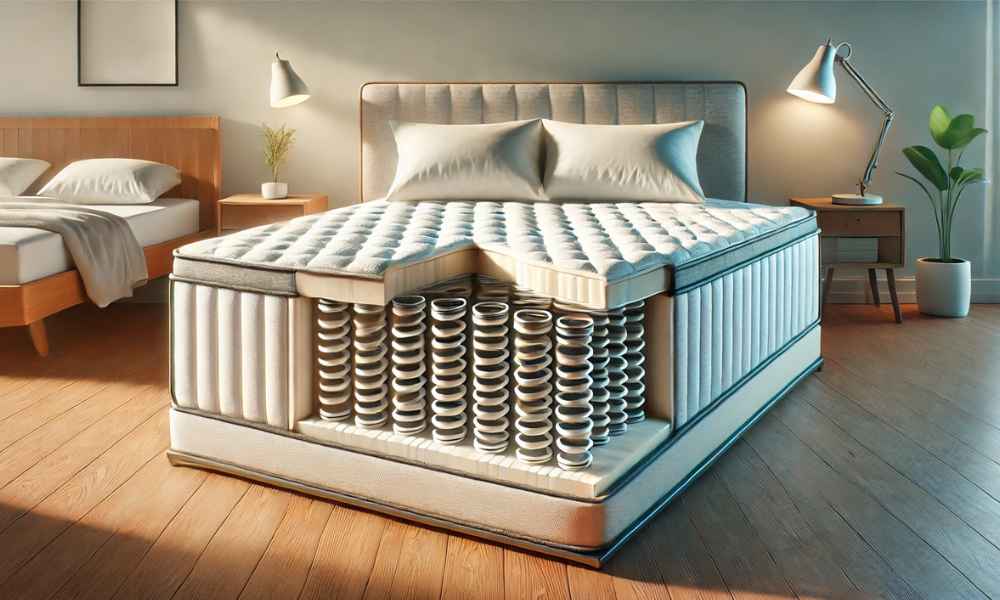A restful night’s sleep often begins with the right mattress. Among the myriad of options available, the spring mattress has withstood the test of time, offering a harmonious blend of support, comfort, and durability. But what exactly is a spring mattress? In its simplest form, it’s a mattress constructed with metal coils or springs that form its core support system. These coils work in tandem with layers of foam, fabric, or other materials to create a sleeping surface that is both resilient and adaptive to the body’s contours. Whether you’re a side sleeper, a back sleeper, or someone who tosses and turns, understanding the nuances of a spring mattress can help you make an informed choice for better sleep quality.
Understanding the Basics
At its core, a spring mattress is designed to provide structural support through a network of metal coils. These coils act as the backbone of the mattress, responding to pressure by compressing and expanding as you move. The way these springs are arranged, the gauge of the metal, and the additional comfort layers above them all influence how the mattress feels. Unlike foam mattresses that rely on dense materials to contour the body, mattresses offer a responsive, buoyant feel—making them ideal for those who prefer a bit of “bounce” in their bed.
Types of Spring Mattresses
Not all mattresses are created equal. The type of coils used, their arrangement, and the quality of materials play significant roles in determining comfort and durability. The four primary types include Bonnell mattresses, pocket spring mattresses, offset mattresses, and continuous coil mattresses. Each has its unique construction, advantages, and drawbacks, tailored to different sleeping preferences.
Bonnell Spring Mattresses: The Classic Choice
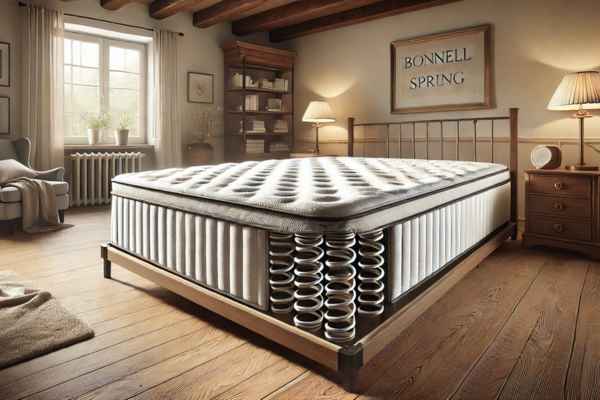
Bonnell mattresses are the pioneers of innerspring technology. Characterized by their hourglass-shaped coils, these mattresses are interconnected with a robust wire frame. This classic design offers a firm, supportive feel, making it a popular choice for traditionalists who appreciate simplicity and durability. While Bonnell springs excel in providing sturdy support, they tend to have higher motion transfer, meaning movements on one side of the bed can ripple across to the other. Despite this, their affordability and longevity make them a go-to option for budget-conscious buyers.
Pocket Spring Mattresses: Individual Comfort
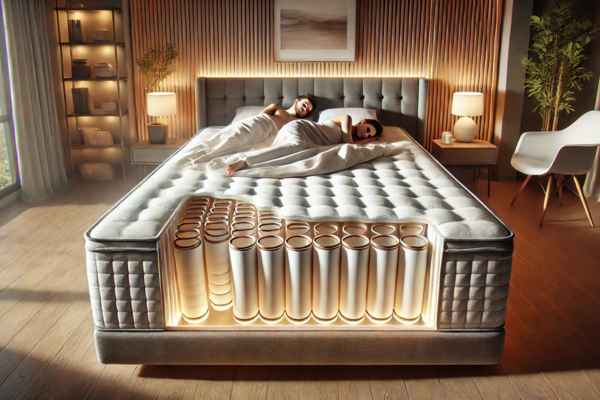
In stark contrast to Bonnell springs, pocket mattresses feature individually wrapped coils, each housed in its own fabric pocket. This design allows each spring to move independently, offering superior motion isolation—a blessing for light sleepers sharing the bed with restless partners. Pocket springs contour more precisely to the body, providing targeted support that adapts to pressure points like the hips and shoulders. This personalized comfort makes them an excellent choice for those seeking a balance between support and softness.
Offset Spring Mattresses: A Stronger Support System
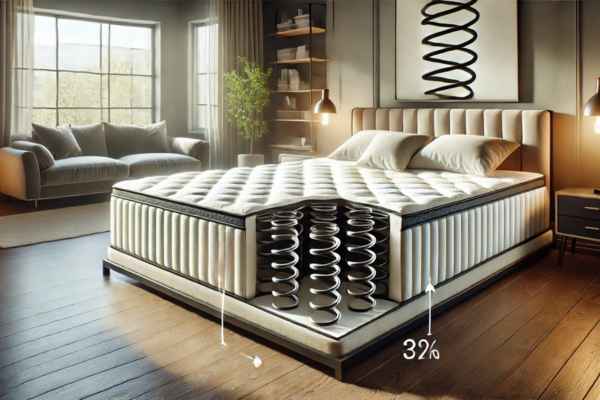
Offset mattresses take the traditional Bonnell design and elevate it with hinged, hourglass-shaped coils that are slightly flattened on the top and bottom. These unique modifications allow the coils to flex more efficiently, providing better contouring and reduced motion transfer. The coils are connected by helical wires, enhancing the mattress’s stability and making it a durable choice for heavier individuals or those needing extra lumbar support. Offset springs offer a middle ground between the firmness of Bonnell springs and the adaptability of pocket springs.
Continuous Coil Mattresses: The Budget-Friendly Option
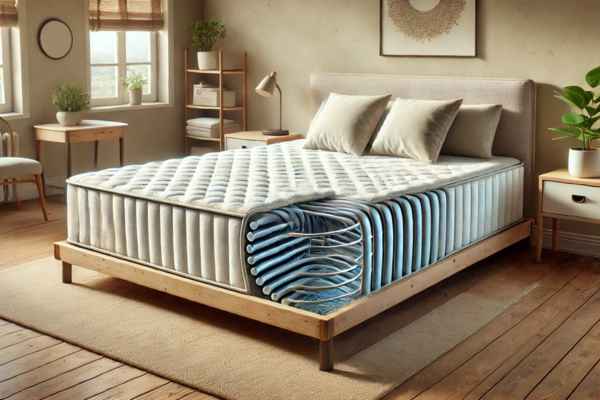
As the name suggests, continuous coil mattresses are crafted from a single, unbroken wire that forms a series of interlinked coils. This design creates a highly durable and stable sleep surface, perfect for budget-conscious shoppers seeking longevity without sacrificing support. While they offer excellent durability and are resistant to sagging, continuous coil mattresses may lack the nuanced support and motion isolation found in pocket or offset spring designs. Nevertheless, their cost-effectiveness and robustness make them a practical choice for guest rooms or rental properties.
How Does a Spring Mattress Work?
The functionality of a spring mattress lies in the mechanical properties of its coils. When you lie down, your body weight compresses the springs, which in turn push back with equal force, providing support and maintaining spinal alignment. The distribution of pressure across the springs reduces stress on pressure points, alleviating discomfort in sensitive areas like the lower back and hips. Additionally, the open structure of the coils promotes airflow, helping to regulate temperature—a key factor for those who tend to sleep hot.
Benefits of Using a Spring Mattress
Spring mattresses offer a range of benefits that appeal to diverse sleep preferences. Their responsive nature makes them ideal for combination sleepers who shift positions throughout the night. The inherent breathability of coil-based designs ensures a cooler sleep environment, as air flows freely through the mattress. Spring mattresses also tend to be more affordable than their memory foam counterparts, offering excellent value for money. Moreover, their firm support structure can aid in spinal alignment, reducing back pain and improving overall sleep posture.
Potential Drawbacks to Consider
Despite their many advantages, mattresses are not without flaws. Motion transfer can be an issue, especially in interconnected coil designs, where movement on one side of the bed can disturb a partner on the other. Over time, some spring mattresses may develop sagging or indentations, particularly if they’re not rotated regularly. Additionally, cheaper models can become noisy, with squeaky springs disrupting sleep. While mattresses excel in support, they may not provide the same level of pressure relief as memory foam, particularly for side sleepers.
Spring Mattress vs. Memory Foam: Which is Right for You?
Choosing between a spring mattress and a memory foam mattress often boils down to personal preference. Spring mattresses are ideal for those who prefer a bouncier, cooler sleep surface with firm support. They’re particularly beneficial for people who sleep hot or need strong spinal support. In contrast, memory foam mattresses offer superior contouring and pressure relief, cradling the body and minimizing motion transfer. However, they can retain heat, which may be uncomfortable for some sleepers. Consider your sleep style, comfort needs, and budget when deciding between the two.
Key Features to Look for in a Spring Mattress
When shopping for a spring mattress, several key features can guide your decision. Start with the coil type—pocket coils offer excellent motion isolation, while Bonnell and continuous coils provide firm, stable support. Pay attention to the coil count and gauge; more coils generally mean better support, and thicker coils tend to be more durable. Look for edge support, which prevents sagging around the mattress perimeter, and consider the comfort layers above the coils—materials like memory foam or latex can enhance cushioning. Lastly, evaluate the warranty and return policy to ensure peace of mind with your purchase.
Who Should Consider a Spring Mattress?
A spring mattress is an excellent choice for a variety of sleepers, thanks to its versatile support and breathable design. Back and stomach sleepers often benefit the most because the firm structure helps maintain proper spinal alignment. If you tend to sleep hot, a spring mattress offers superior airflow, preventing heat buildup compared to dense foam alternatives. Combination sleepers—those who change positions frequently—will appreciate the responsive bounce that makes movement effortless. Additionally, people who prefer a traditional, firm feel or are shopping on a budget will find spring mattresses an appealing option due to their affordability and durability. For couples, pocket mattresses reduce motion transfer, making them ideal for light sleepers sharing a bed.
How to Care for Your Spring Mattress
Proper care can significantly extend the life of your spring mattress, ensuring it remains supportive and comfortable for years. First, rotate the mattress every 3-6 months to prevent sagging and even out wear. While older models may be flippable, most modern mattresses are designed for single-sided use—so rotation is key. Use a mattress protector to shield against spills, dust mites, and allergens, which can degrade the materials over time. Regular vacuuming keeps the surface clean, especially in households with pets. Ensure your mattress rests on a sturdy bed frame or foundation to maintain structural integrity. Lastly, avoid sitting on the edges frequently, as this can weaken the perimeter support.
Common Myths About Spring Mattresses
Several myths about spring mattresses have persisted over the years, often leading to misconceptions. One common belief is that mattresses are outdated, but modern designs with pocket coils and advanced materials rival the comfort of newer technologies like memory foam. Another myth suggests that spring mattresses cause back pain, when in reality, many people find their firm support beneficial for spinal health. Some assume that all mattresses are noisy, yet high-quality models with individually wrapped coils and better construction significantly reduce squeaks. Lastly, there’s the misconception that more coils always mean better support—while coil count plays a role, factors like coil type, gauge, and overall design are equally important.
Choosing the Right Spring Mattress for Your Needs
Selecting the right mattress involves considering several key factors to match your comfort preferences and sleeping habits. Start by identifying your preferred firmness level—firmer mattresses suit back and stomach sleepers, while softer options are better for side sleepers. Consider the type of coil system: pocket springs offer great motion isolation, while Bonnell coils provide firm, traditional support. Look for features like edge support if you sit or sleep near the mattress’s edge frequently. For hot sleepers, opt for mattresses with breathable fabrics and open coil structures to enhance airflow. Lastly, always check for a warranty and, if possible, a trial period to ensure the mattress fits your needs.
Eco-Friendly Options in Spring Mattresses
As sustainability becomes a priority for many consumers, eco-friendly mattresses have gained popularity. Look for mattresses made with organic or natural materials, such as organic cotton covers, natural latex layers, and recycled steel coils. Some brands offer certifications like GOTS (Global Organic Textile Standard) and CertiPUR-US, ensuring environmentally friendly production and non-toxic materials. Additionally, companies focused on sustainability often implement eco-friendly manufacturing processes, use plant-based foams, and support recycling programs to reduce landfill waste. Choosing an eco-friendly spring mattress not only supports better sleep but also contributes to a healthier planet.
How Long Does a Spring Mattress Last?
On average, a mattress can last between 7 to 10 years, depending on the quality of materials and how well it’s maintained. High-quality models with pocket coils and durable fabrics tend to outlast cheaper alternatives. Regular rotation, using a mattress protector, and ensuring proper support can help extend its lifespan. Signs that it’s time to replace your mattress include sagging, visible lumps, or if you wake up feeling stiff or uncomfortable despite a good night’s rest. Over time, even the best mattresses lose their structural integrity, affecting both comfort and support.
Can You Flip a Spring Mattress?
Whether you can flip a mattress depends on its construction. Double-sided spring mattresses, common in older models, are designed to be flipped regularly, promoting even wear on both sides. However, most modern mattresses are one-sided, with a designated comfort layer on top and a supportive base below. Flipping these mattresses can lead to discomfort and even damage the structure. Instead, rotate your mattress 180 degrees every few months to prevent sagging and maintain consistent support. Always refer to the manufacturer’s guidelines to determine the best care practices for your specific mattress.
Are Spring Mattresses Good for Back Pain?
Spring mattresses can be highly effective for managing back pain, especially when chosen with the right features. Their firm support structure helps maintain proper spinal alignment, reducing strain on the lower back. Pocket mattresses are particularly beneficial because they offer targeted support by adjusting individually to the body’s pressure points. However, not all spring mattresses are equal—choosing a model that’s too soft or lacks proper support can exacerbate back issues. For chronic back pain sufferers, a medium-firm mattress often provides the ideal balance of support and comfort, promoting healthy posture throughout the night.
Conclusion
A spring mattress is more than just a place to sleep—it’s a blend of engineering and comfort designed to support your body and enhance your sleep quality. With various types to choose from, including Bonnell, pocket, offset, and continuous coil designs, there’s a spring mattress to suit every need and budget. Understanding the mechanics, benefits, and potential drawbacks of mattresses can help you make an informed decision. Whether you’re seeking firm support, breathability, or budget-friendly durability, a well-chosen spring mattress can be the key to waking up refreshed and ready to take on the day.
